Climántica :: Biblioteca
- Galego
- |
- Castellano
- |
- English
Consequences of global warming.
The greenhouse effect was changed by human beings because it threatened their security. Poor and developing countries are those that suffer directly the impact of environmental degradation.
In this sense, increasingly severe hurricanes and cyclones are taking place in tropical areas and most of them involve poor countries so that their consequences enhance their degree of poverty.
In addition, these areas that suffer from social and economic injustice undergo increasing droughts in places where rainfall diminishes, and floods in those places where rainfall increases.
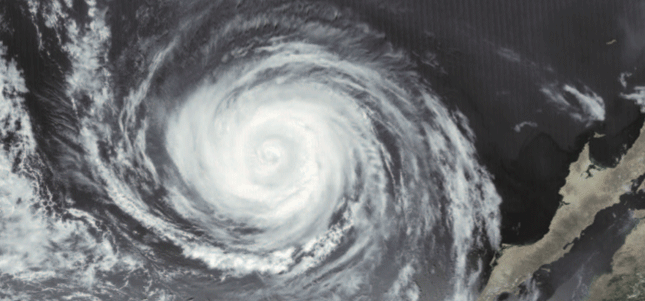
A warmer atmosphere could make the ice near the Poles melt. As it has already been said, the resulting water could raise the sea level.. If the sea level rises only 60 cm, Bangladesh’s fertile lands on which thousands of people depend could be flooded.
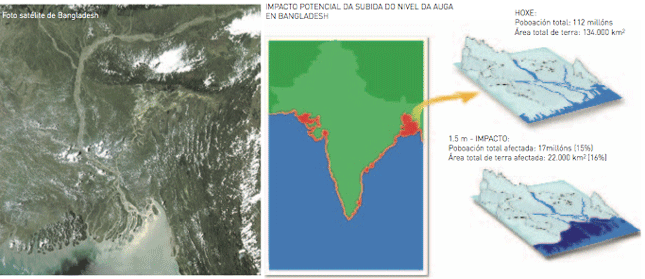
Scientists have recently agreed on the fact that “El Niño” is possibly caused by man-induced global warming, unbalancing the planet’s climatic state. As a consequence, in some countries it rains so much that there are floods whereas other countries undergo severe droughts. In addition, extreme temperature changes and atmospheric pressure bring about tornadoes and typhoons.
Human activity’s impact on greenhouse effect and therefore on climate, become a serious concern from the seventies. In this way, the First World Conference on Climate took place in 1979, when climate change was identified as a serious challenge to face.
The IPCC faces the consequences.
In 1988 the United Nations established the Intergovernmental Panel on Climate Change (IPCC) in order to assess the state-of the-art on the global climate system, on climate change and its social, economic and environmental impacts and the possible international strategies to cope with these global issues.
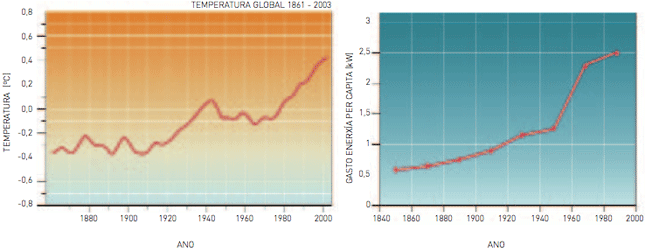
The representation of running means in the last decades’ average temperatures shows a remarkable trend to an increase in temperature. This global warming causes evident consequences for us and for life on the Earth.
Nevertheless, when climatic changes at a local level are studied, the degree of uncertainty increases, since trends to a reduction in some places can be observed within the framework of this evident trend to a global increasing temperature. But these global effects always influence on the balance of the nearest ecosystems and on social and economic life.
Alterations in terrestrial ecosystems transitions.
There are many types of terrestrial ecosystems and most of them are conditioned by human action. Only in the Iberian Peninsula we can find a great variety of them, among which there are two main groups: those from the Atlantic region and those from the Mediterranean region. This variety is easier to describe in Portugal due to the predominance of the North-South axis in its geography. The following model can be established on an imaginary North-South line:
-
Wetland ecosystems: meadows with fences.
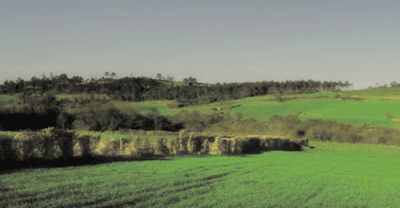
-
The Miño river’s ecosystems, where there is a mixture of vineyards and corn fields.
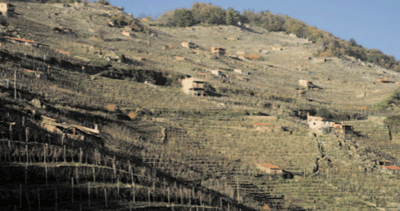
-
The Sil and Douro’s terraces, typical from Porto.
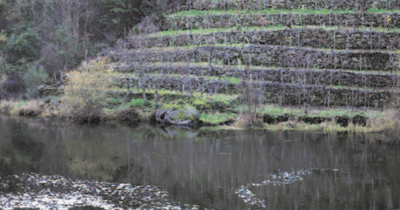
-
Pasture ecosystems.
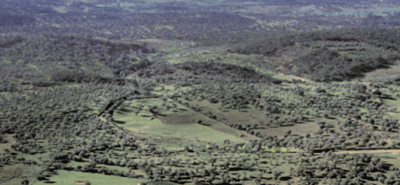
-
Very dry and eroded landscapes and greenhouse crops.
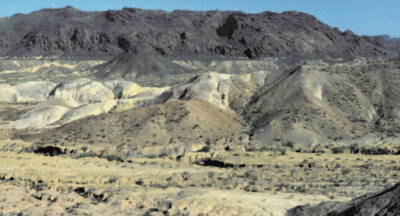
Although the effects on Atlantic ecosystems -limited by temperature- are different from the Mediterranean ecosystems -limited by water-, intrusive species tend to move upwards.
Mediterranean vegetation tends to move upwards and the Mediterranean area tends to become desertified due to more and more frequent and severe droughts and to an increasing risk of forest fires. These desertification processes have a serious impact on one third of the Spanish surface, mainly Southern and Eastern regions, where the Mediterranean climate –rainfall over 400 mm and with a seasonal nature- is gradually becoming an arid climate –rainfall under 400 mm-.
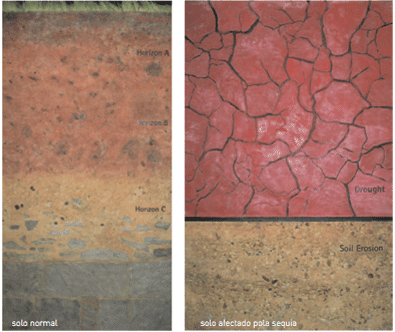
pIn South-Eastern Spain’s climate, which is less and less Mediterranean and is becoming more and more arid, salinization processes due to the evaporation of the soil’s water saturated in mineral salts increase during periods of extreme droughts. They form salt layers, usually gypsum, which damage the soil in many Mediterranean vegetation areas. In addition, sea water can be introduced into soils due to the lower phreatic level of deep waters, as in Almeria’s greenhouse crops.
Tendency to desertification.
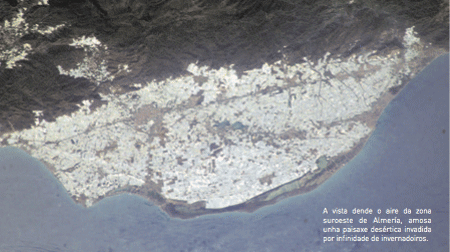
Soil salinization is possibly the most important deterioration process in arid and semi-arid countries. These processes are related to over-irrigation in dry climates, to thin soils and to the use of too salty water in irrigation and sea intrusions.
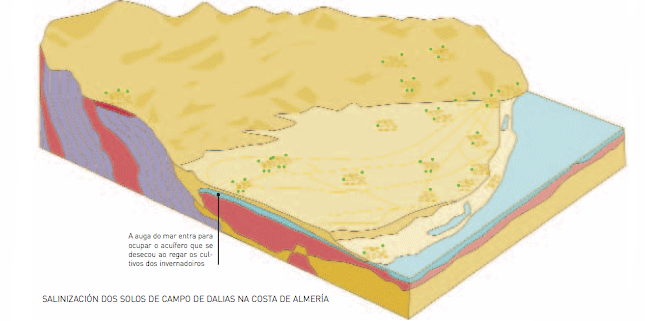

In Southern areas flora diversity diminishes and this is linked to a decrease in the associated fauna. This decrease has to do with the fact that species that are less resistant to water stress are extinct.
Changes in the species’ behaviour.
Apart from increasing the water stress, climate change’ effects on vegetation have an impact on the foliation, flowering and fructification periods and on the delay of the leaf fall. Plants are flowering as an average of 10 days before than they did 30 years ago. At the same time, the insects’ life cycle is also affected by larvae acceleration and this becomes a risk for them in case of frost, and also for animals depending on them for their food.
The tendency towards a Mediterranean climate observed in Galicia is helping Mediterranean species find here the conditions to which they are adapted and are losing their present distribution areas. Therefore, if the present trend is maintained, the whole Galician region, except the Northern area of Lugo, will have Mediterranean ecosystems and most of Galician landscapes will be similar to those from the Douro region, in Portugal.
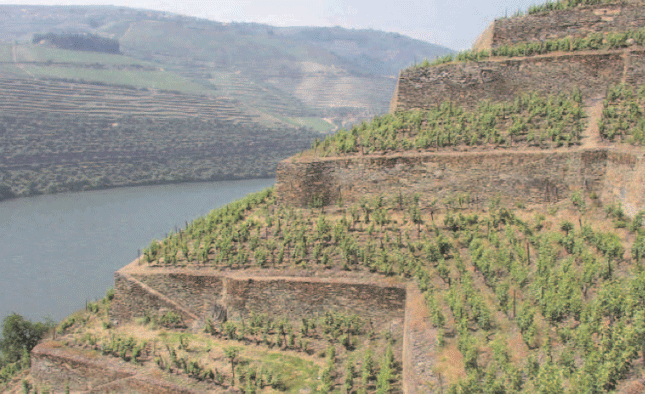
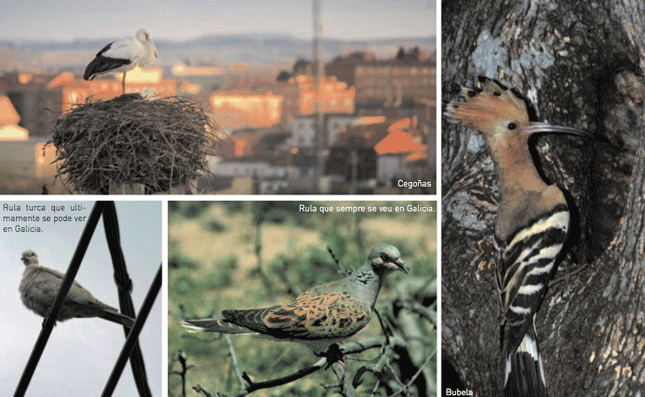
Pests and forest ecosystems.
Among the most important types of ecosystems described along the North-South line, the most relevant are forestry ecosystems, mainly forests and shrub. These ecosystems, usually located on slopes and areas very difficult to cultivate, bring about economic advantages as well as important ecological benefits such as protecting against erosion, controlling and regulating the water cycle, preserving the biodiversity and finally, the development of leisure activities.
As seen above, in early stages forests play a key role in the carbon cycle, but these trees are more exposed to environmental stress, causing their regression. This makes the forests’ recovery more difficult in eroded areas due to the lack of vegetal cover.
Pests favoured by climate change can be very relevant in this process of forest fragmentation and the subsequent development of ecosystems observed in the resulting landscapes. This is due to the fact that increasing temperatures and the subsequent better conditions for the development of pests and diseases result in a longer impact on the vegetation on which they feed. The best-known example is that of the pine’s processionary moth (Thaumetopoea pityocampa) that increases the area subject to colonization, since it can go up in warmer winters, and colonize it in a natural way, so that pinewoods can be affected by this pest.

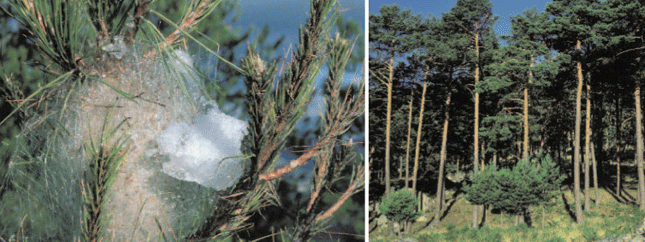
The processionary is a nocturnal moth that is so called because when it goes out from the nest where it deposits its eggs on the bottom of the pine’s branches, it moves in a queue as if in a procession. The link between their biological cycle to pines is being a pest for these trees, mainly when they are located at the sea level. Nevertheless, climate change allows their invasion towards higher pinewoods, and it starts being a threat to high-mountain pines (Pynus silvestris).
Disruptions in biological cycles.
Observations demonstrate that an earlier biological cycle has been verified within the butterflies’ group, as well as an earlier caterpillar hatching of some species due to the increasing global temperature. In addition, leafs and flowers are blooming earlier leading to disruptions in the trophic relationships of species relying on these hatchings.
Studies on the nocturnal moth Operophtera brumataque are the most relevant since this species feeds on the oak’s leaf buds that are also blooming earlier. At the same time this has also an impact on the feeding of the great tit’s youngs.
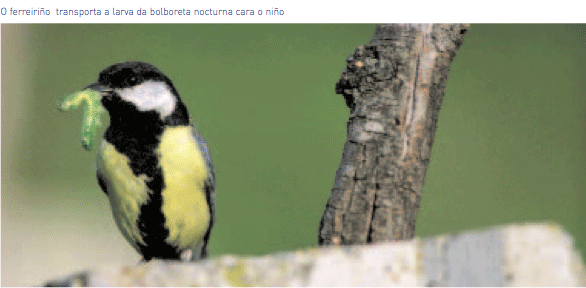
Nowadays the oak’s leaf buds bloom 10 days earlier than in 1985 but larvae come out from eggs 15 days earlier, reducing the number of individuals in this species due to the lack of food. As the great tit relies on these larvae for its food, it has had to change its feeding habitudes. This sort of disruptions can change the trophic relationships among the ecosystems, affecting their dynamics and development.
Climate change also favours the arrival of important winter moths from warmer climates because it is easier for them to adapt and spread themselves as a consequence of climate change. These insects can have an important impact on the stability break and the ecosystem’s continuity.
The substrate unbalance. Disasters
The periodicity and virulence of some natural events can be strengthened by climate change. This is the case of forest fires, river floods and landslides.
-
FOREST FIRES
Forests are the most important CO 2 sinks and play a key role in the alleviation of climate change’s effects since they contribute to reduce the planet’s warming by storing this gas. Nevertheless, the exacerbated forest clearing and fires reduce the benefits derived from the forests.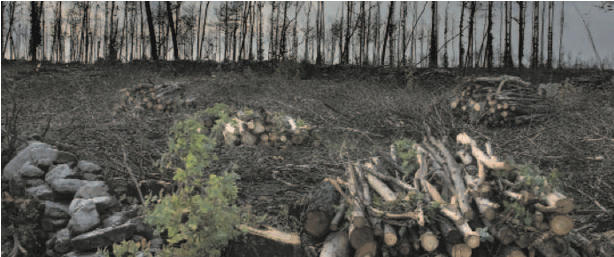
Most forest fires are man-made but climate change can alter their frequency due to increasing temperatures and intense wind. These changes together with drought make forests more vulnerable to fire. The forests’ benign effects become damaging when they are burnt, because in the combustion process the fixed carbon is released into the atmosphere causing the greenhouse effect and, therefore, the Earth’s global warming.
Forest fires have an impact on the soil quality because they are responsible for the erosion. The loss of vegetation and burnt soils’ degradation lead to erosion processes due to runoff waters. More intense rains foreseen by scientists lead to erosion and therefore to the soil loss.
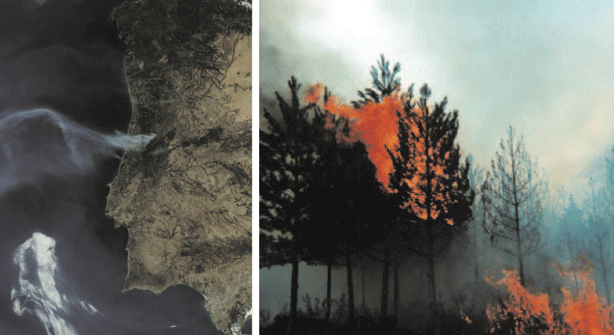
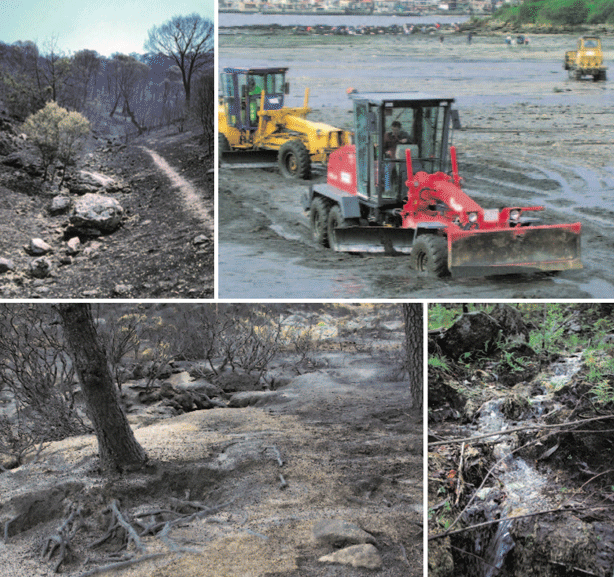
Soils affected by a forest fire show a devastating image. Apart from the visual impact of this burnt landscape, they are exposed to erosion since the tree roots are not able to hold down to the soil. Runoff waters during intense rainfall periods cause the substrate mobilization and transport down the slope.
Later on, ashes settled on burnt forests are swept along by water into the estuaries where they are deposited. The seafood fisheries in the Galician “Rías Baixas” (estuaries) are affected by these ashes and eroded sludge deposits because the sea species are buried by them and die from suffocation. This causes important economic losses in that sector.
Our region has always been affected by forest fires. Data show that in 1970-1990 the surface burnt in Galicia was about one fourth of the Spanish global burnt area. Those areas most exposed to forest fires are located on the South. In addition future estimates on climate change confirm that in these areas temperatures will rise up to 5 degrees Celsius in summer and this can increase the risk of forest fires in this area.
-
RIVER FLOODS
Floods are caused by intense rainfall; that is the reason why their origin is in the atmosphere. Climate change can strengthen extreme meteorological events that give rise to intense rainfall in areas where such a large quantity of water cannot be absorbed. Nevertheless it is true that floods produced in areas through which rivers flow are processes integrated into the river system dynamics. From a long time ago the Nile’s annual overflowing has introduced a large quantity of sludge into the river, leaving fertile lands on its banks which are used for different crops when the water level descends.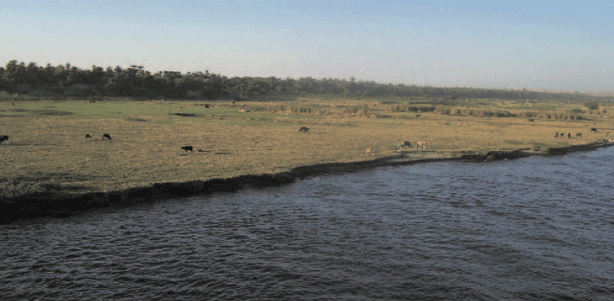
Nevertheless, it can be said that there are many countries where floods produce an enormous damage. River basin banks as well as flooded plains are places where human settlements are usually located, but they run the risk of being flooded when it rains intensely. In many cases, the soil’s capacity to infiltrate and store water has an impact on the development and virulence of floods. Those soils that are less affected by floods have a higher infiltration capacity and a good water movement under the earth.
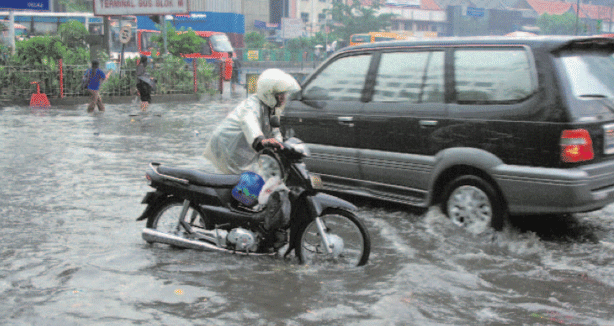
Clearing or burning forests trigger surface runoff and as a consequence of that process, currents transport a large quantity of sediments that can settle on dangerous places. These sediments can act as natural dams blocking the river beds and therefore causing their overflowing, and multiplying the devastating effects of floods.
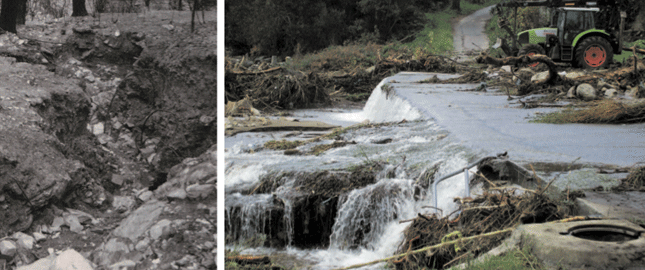
Torrential rains that fall on a soil affected by a forest fire can trigger runoff down the slope, digging erosion channels as those shown below located in Quiroga, Lugo.
-
SLOPE INSTABILITY
Although the anthropogenic action is one of the main causes of slope instability due to the change in land uses, climate change has to be considered in order to value whether an area is exposed or not to erosion. These variations imply changes in rainfall (intensity and duration) and increasing temperatures. Human action can worsen the instability problems by clearing forests, altering river beds and levelling lands to build roads. These actions often cause land breaking and landslide.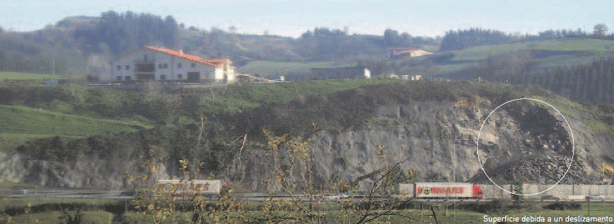
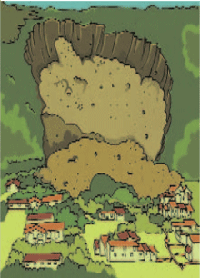 The main cause of landslide is the rain because it causes soil instability when it is infiltrated and therefore it increases the pressure on it. When this pressure reaches the highest levels, the slope breaks and the landslide starts. In alpine areas where snow covers the land, the risk of avalanche is linked to increasing temperatures and the subsequent melting of the snow piled up on the land and the permafrost under it.
The main cause of landslide is the rain because it causes soil instability when it is infiltrated and therefore it increases the pressure on it. When this pressure reaches the highest levels, the slope breaks and the landslide starts. In alpine areas where snow covers the land, the risk of avalanche is linked to increasing temperatures and the subsequent melting of the snow piled up on the land and the permafrost under it.
In Galicia the areas that are mostly exposed to landslide risks are located in the mountains of Lugo and Ourense where the substrate is formed by slate.
Surveys indicate that the areas most exposed to future landslides linked to climate change are on the Cantabrian Mountain range and on the Douro’s North basin due to the increasing winter rains. As a contrast, in Mediterranean areas where rainfall will be more irregular, landslides are limited to wetter periods. On the coast, sea level rise and frequent storms will have an impact on the erosion of cliffs that can cause landslides, mainly of rock cliffs walls..The gradual increase of temperatures in high mountains such as the Pyrenees, the Cantabrian or the Baltic mountain ranges will shift the risk of avalanches and landslides to higher levels due to the ice retreat and to the snow piled up on higher tops.
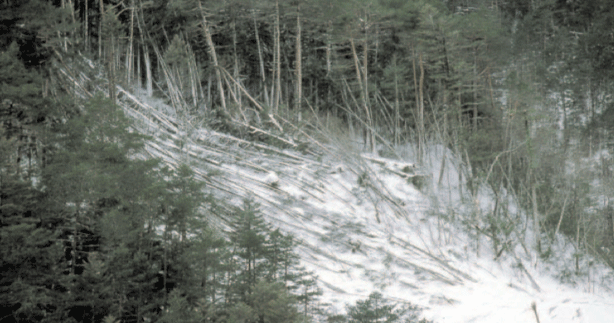
-
EFFECTS ON FRESHWATER: WATER RESOURCES
Water is an essential resource for life on Earth. Climate change will have more impact on the Globe’s arid and semi-arid areas where water availability is limited. As a contrast, wet areas will have to face important changes in the rainfall regime by adapting themselves to eventual droughts and to the devastating effects of more frequent floods. The water level in aquifers and dams can descend as a consequence of droughts and this situation will be even worse when the river water flow is lower because this causes water stagnation and the degradation of its quality. The stagnation process can lead to a potential source of infection and diseases in regions where water change is very limited.
When resources are analysed an increasing demand should be considered due to the world’s growing population. In these terms, it is necessary to take initiatives to manage efficiently the use of water resources as well as improve agricultural and urban planning policies.
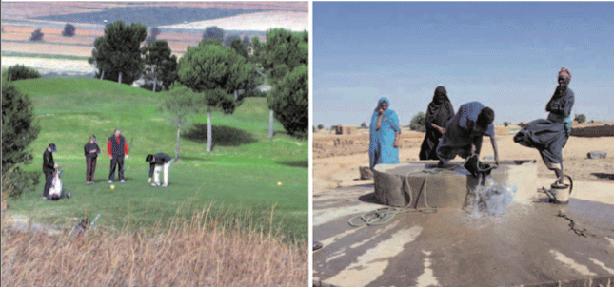
It is estimated that in Spain water resources can be reduced at about 17 percent if temperatures rises 2.5 degrees Celsius and rainfall is reduced at about 8 percent. These changes will be more remarkable in Levant –Jucar and Segura-’s, the Southern Guadiana and Guadalquivir’s and the islands’ river basins.
With all these climate change’s impacts on the land, those areas covered by forests at present can change into areas covered by shrub, and therefore they will be exposed to the risks of erosion and desertification.

